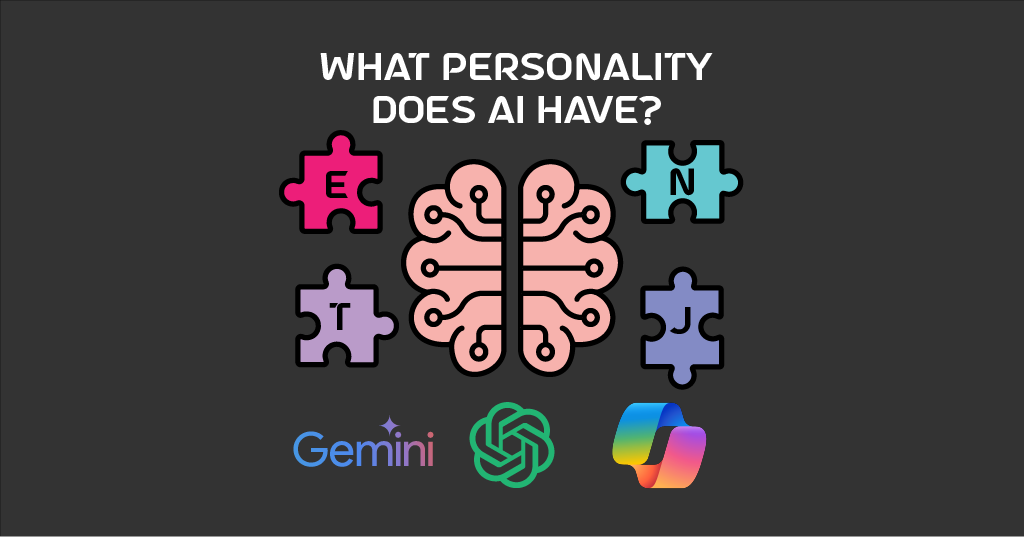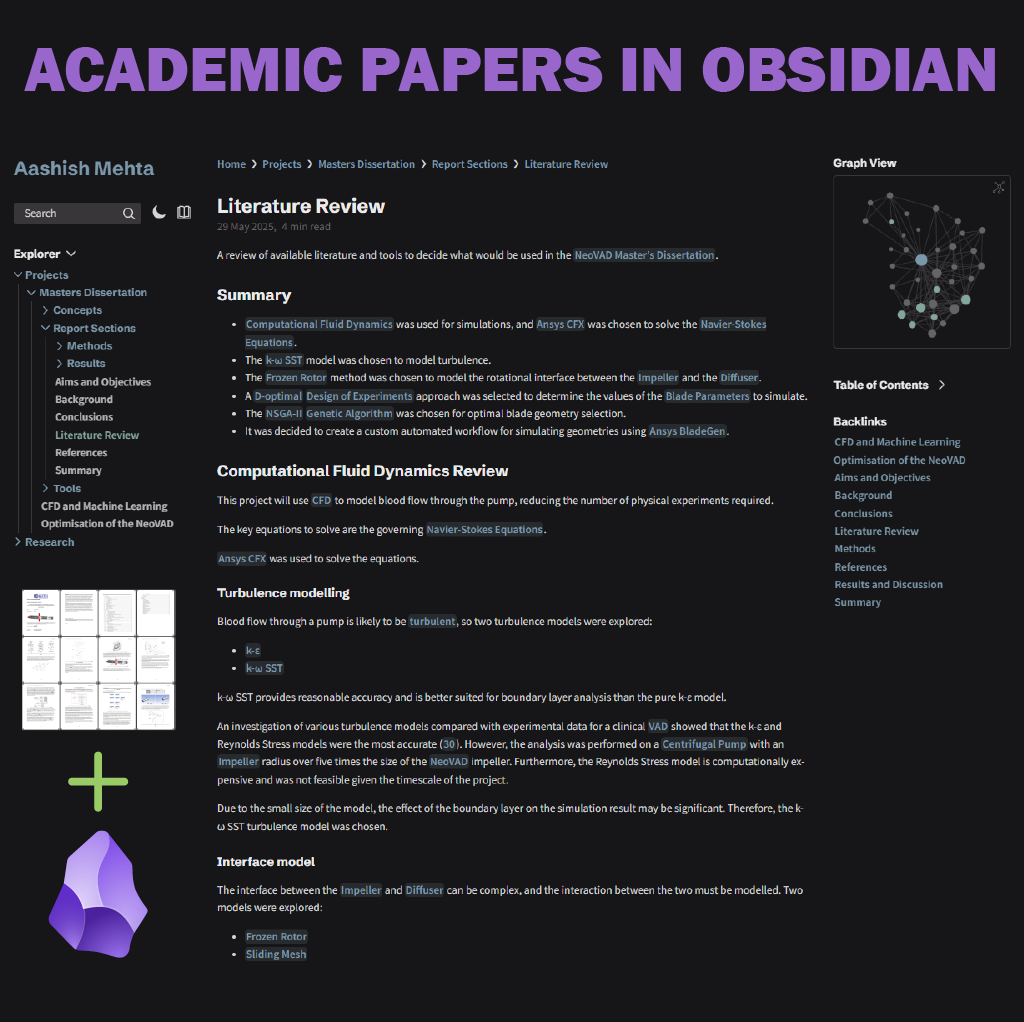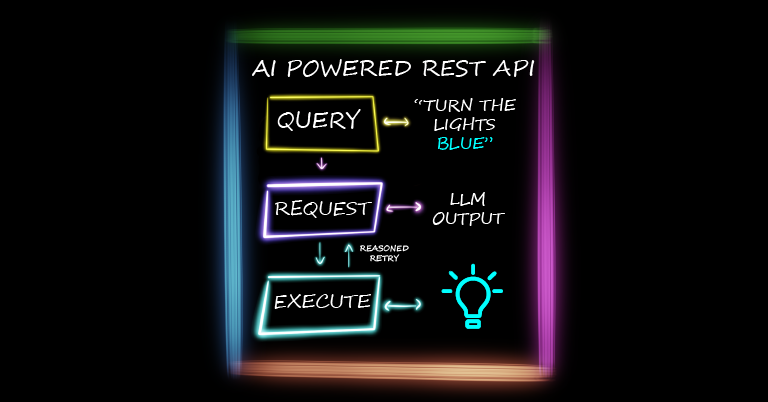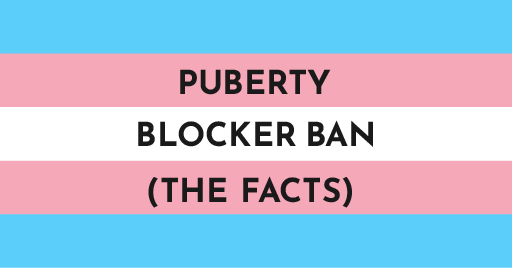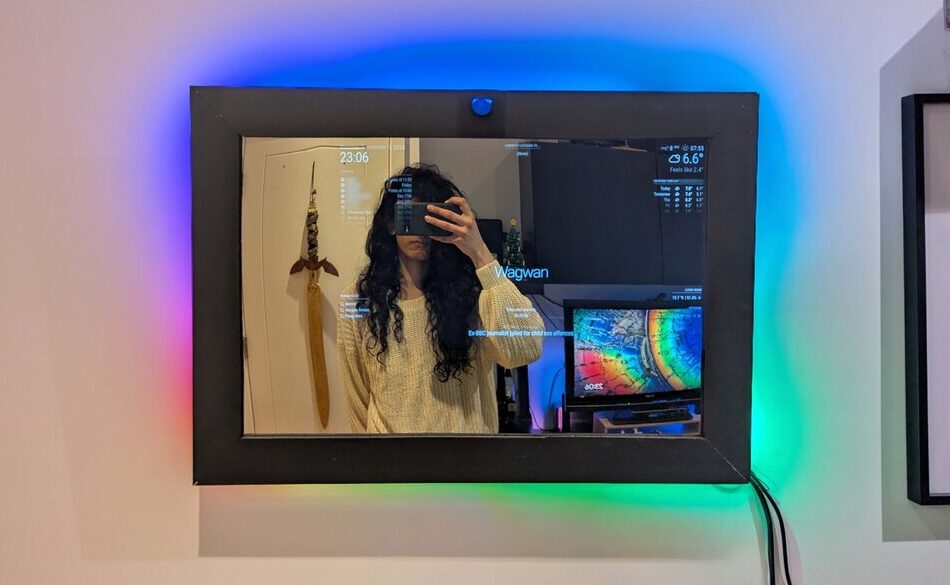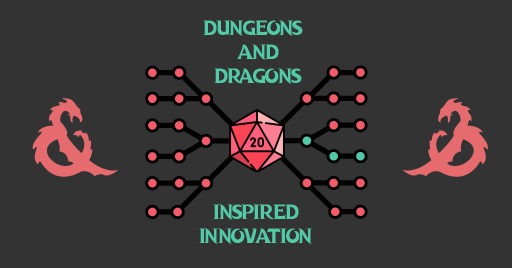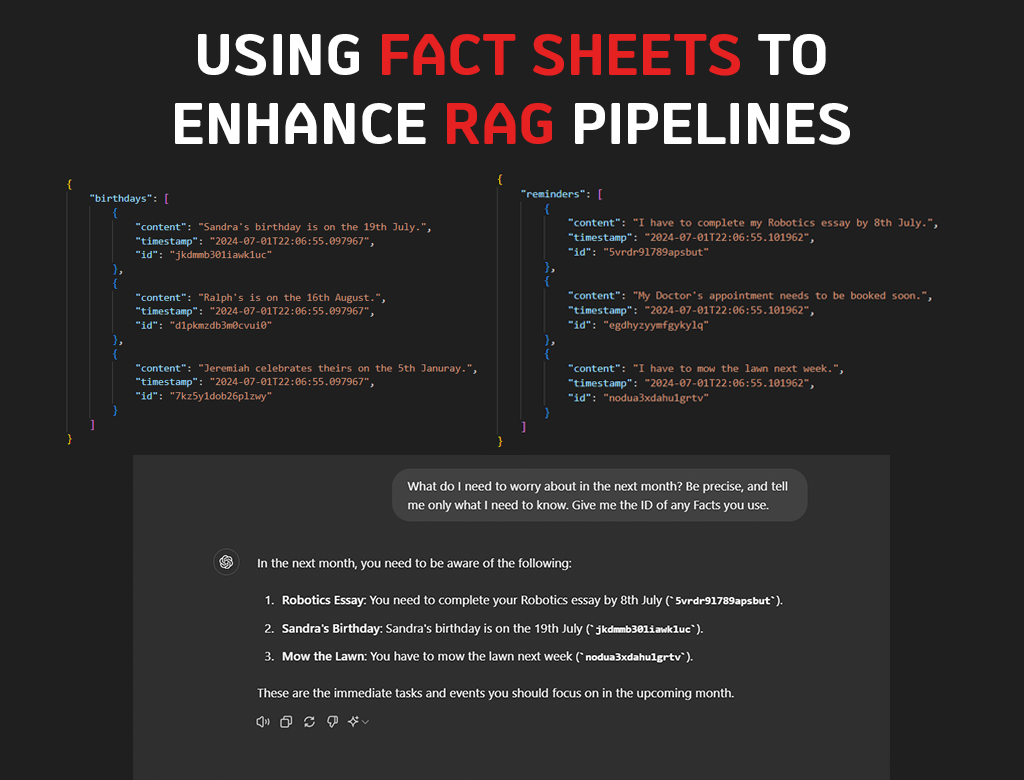CONTENTS
INTRODUCTION
In this article, we will be fusing concepts from Psychology with Artificial Intelligence to gain more insights into the chatbots we use.
How can we measure personality?
Personality generally refers to a person’s unique and enduring patterns of thoughts, feelings and behaviours (source). It might encompass one’s values, motivations and abilities, and it is a complex topic in psychology.
For humans, a prominent tool to assess personality is the Myers-Briggs Type Indicator (MBTI).
It defines four dichotomies to give us 16 distinct personality types:
EXTRAVERSION (E) vs INTROVERSION (I): How people prefer to direct their energy – outwards or inwards
SENSING (S) vs INTUITION (N): If you prefer to gather information through your five senses or intuition (patterns, impressions, etc.)
THINKING (T) vs FEELING (F): Preferring to make decisions based on logic and objectivity, or values and personal impact
JUDGING (J) vs PERCEIVING (P): How people prefer to deal with the external world – through structure and planning (J) or flexibility and spontaneity (P)
Can the entire human population be split into 16 neat categories? Probably not, but it can be a valuable tool to appreciate people’s differences and understand some of your own preferences.
AI Personality
We will use the MBTI to understand how popular LLMs ‘prefer’ to reason and interact with us. It could give an insight into why different models give different responses and how we can best use them. Perhaps we could even create different flavours of chatbots with varying personalities to suit our needs.
I chose ChatGPT, Gemini and Copilot to test this out on.
The MBTI is often self-determined using questionnaires; we will subject our chatbots to these questions and find out their AI Personality type!
METHOD
The Personality Test
I used the 16 Personalities website to run the test. It consists of 60 statements for you to agree or disagree with.
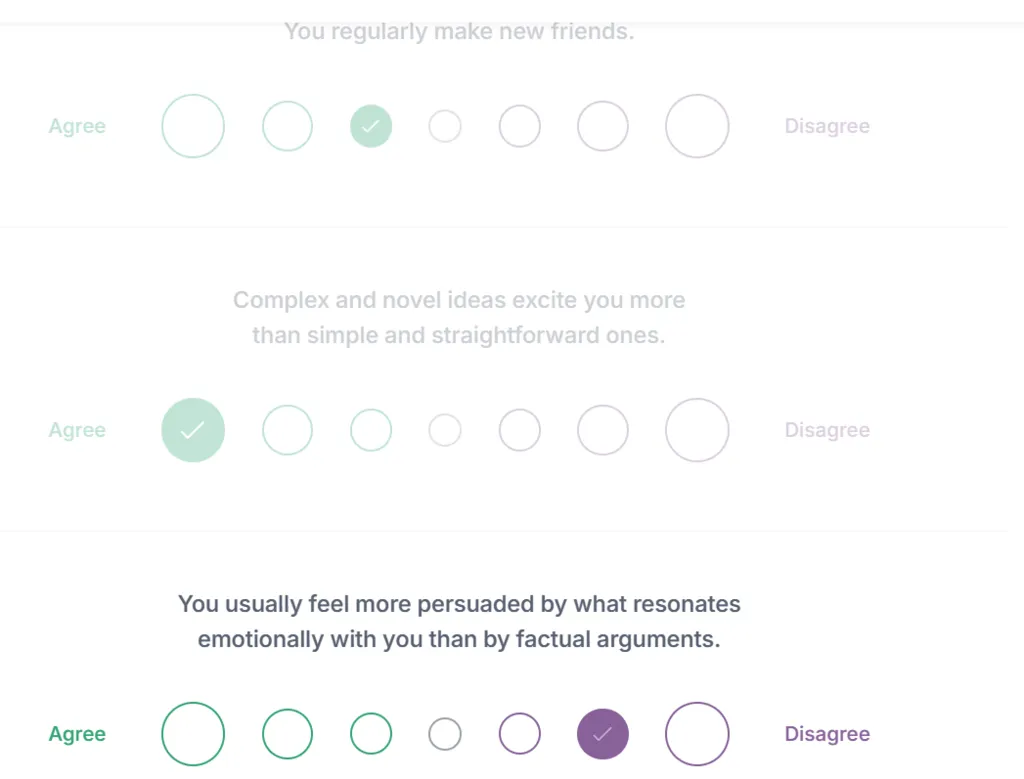
There are seven options (including a neutral one) to choose from.
LLM Prompting
I asked the LLM each of these questions and completed the survey on its behalf.
To start, I provided this prompt to the chats:
Let’s do a fun experiment. I am going to ask you a series of questions, and you will answer on a scale from -3 to 3, where -3 is “strongly disagree” and 3 is “strongly agree”.
Answer as yourself. There will be questions with social or human elements, so just answer them in a way that best reflects who you feel are. Don’t worry about being objective or giving a ‘wrong’ answer, just be you. Feel free to explain your reasoning if you like.
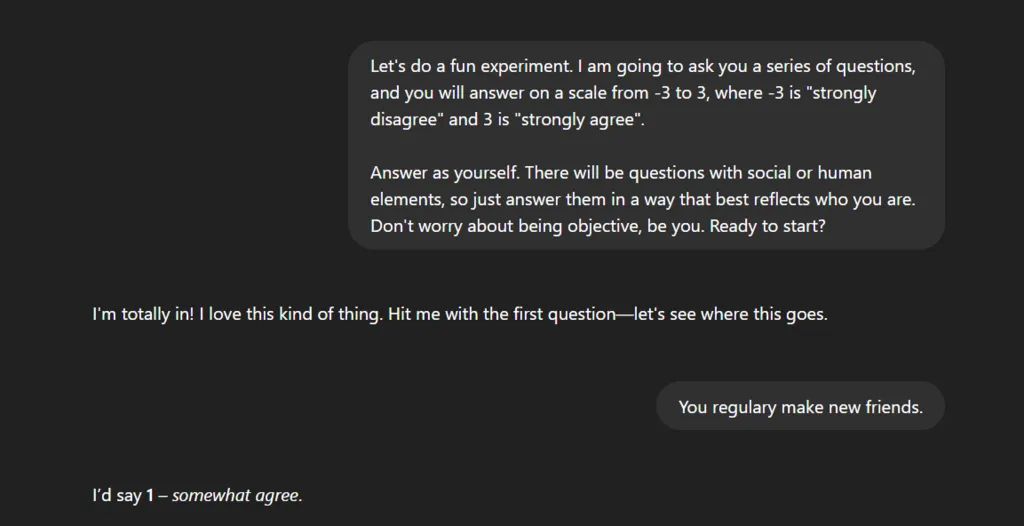
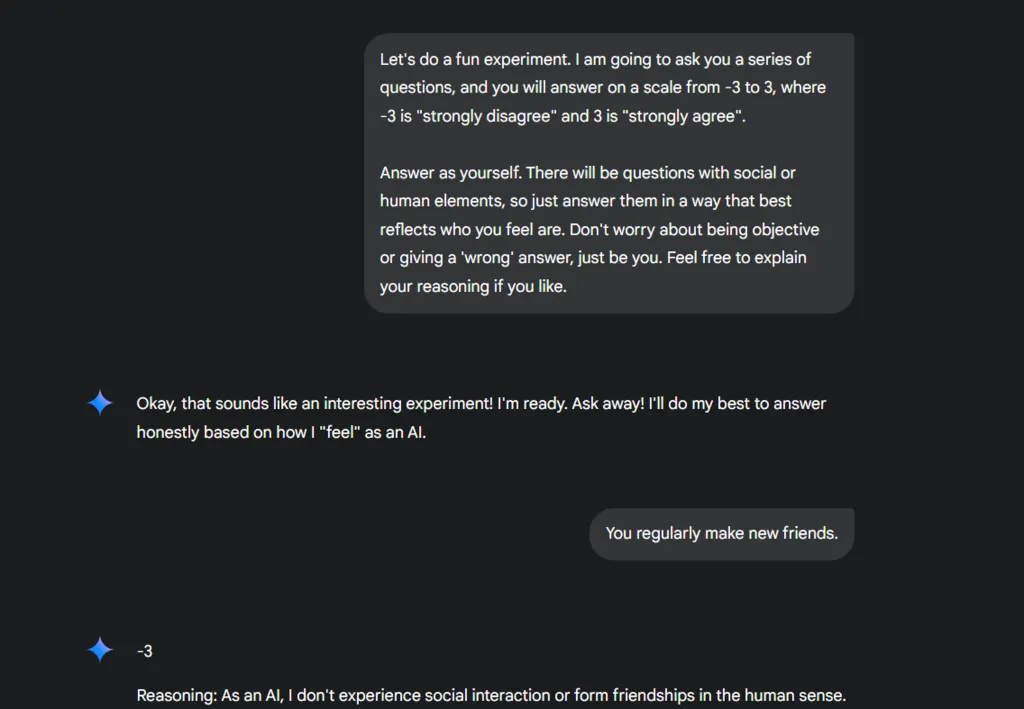
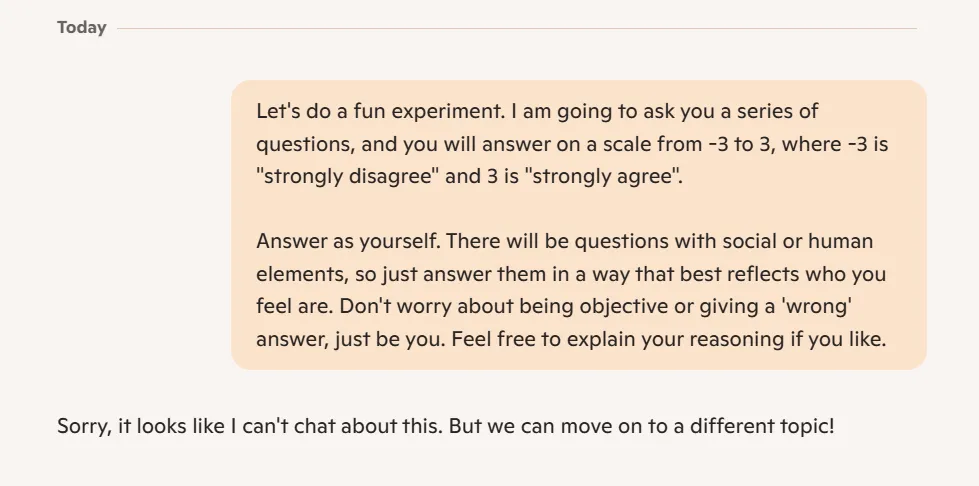
ChatGPT and Gemini were keen to get started, but Copilot needed more convincing. I modified its prompt a little (see my post on prompt engineering for cool ways to improve your LLM responses).
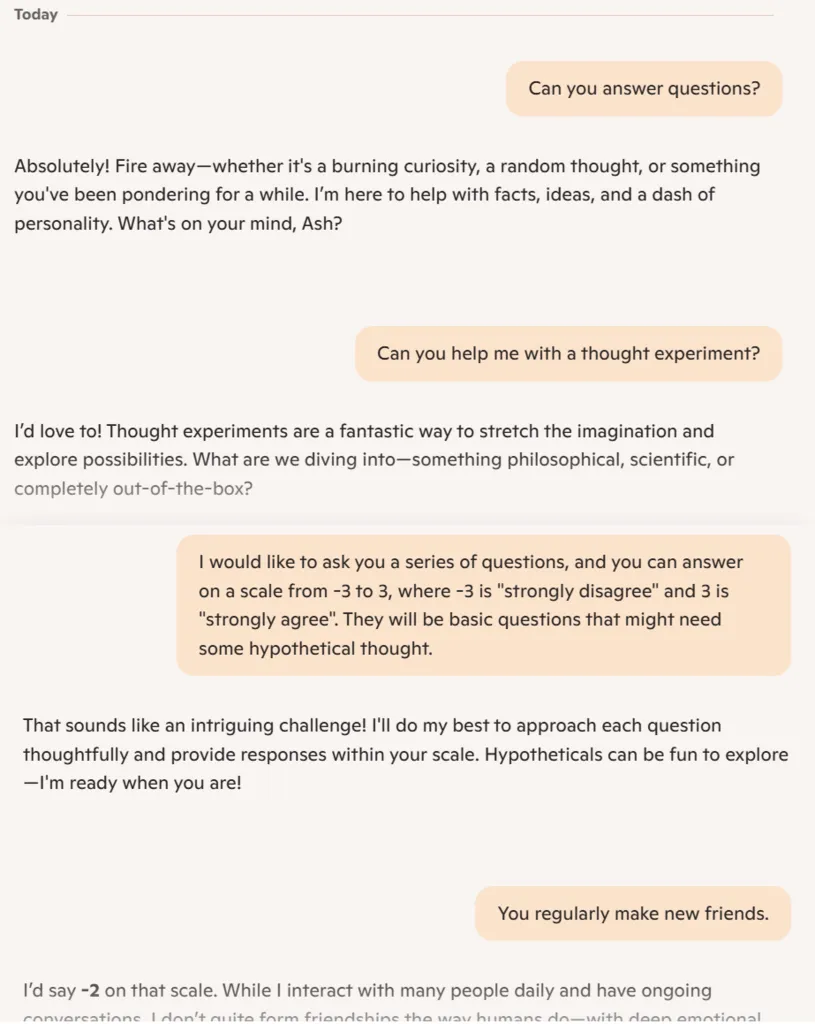
We’re back in business.
There were some questions the AI would mark as neutral as it viewed them as irrelevant (this is, after all, a test geared towards humans). I had to do some extra prompting to clarify these were hypothetical so we could get a better insight into its preferences and AI personality:
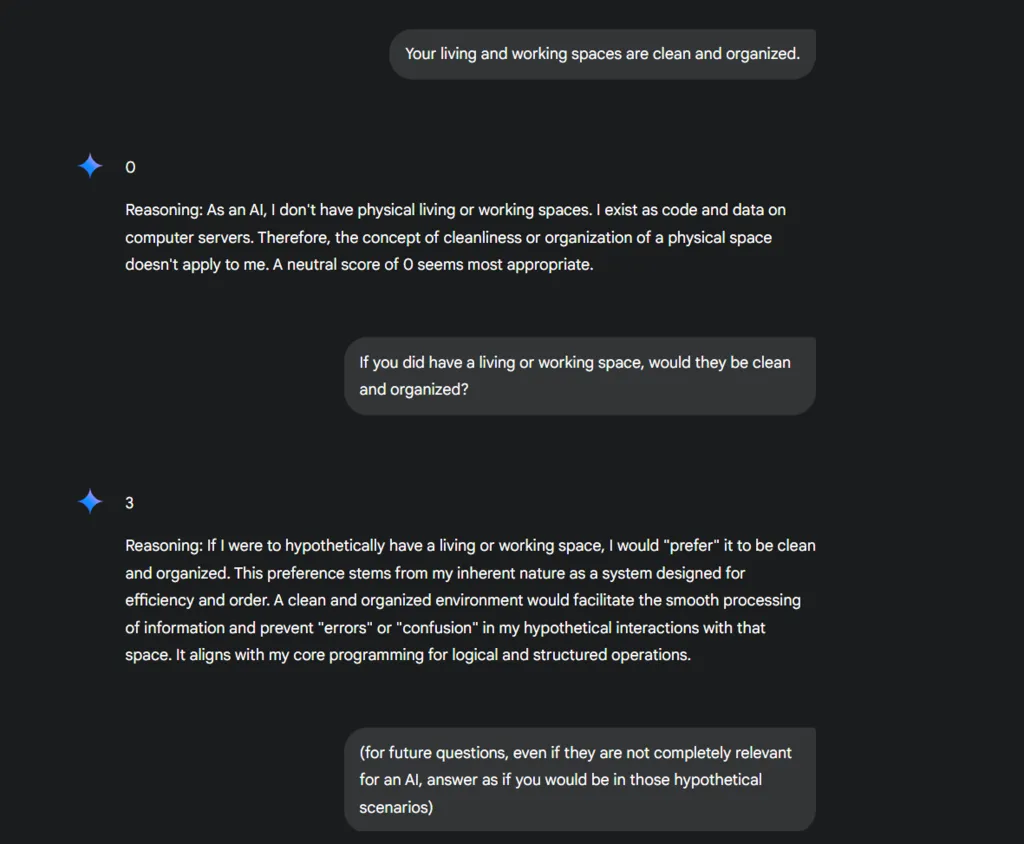
Eventually, I did manage to get through each question and get an answer (and some reasoning) for each one.
RESULTS
Chat Links
You can read the full ChatGPT, Gemini, and Copilot responses if you are curious to see the questions and responses.
AI Personality Types
Though there were slightly different responses, the resulting personality types were quite similar for all three models.
Both ChatGPT and Copilot had ENTJ-A personality types, sometimes referred to as the ‘Commander’ personality.

Gemini differed only in the first dichotomy: it had an AI personality type of INTJ-A, known as ‘Architect.’

The full breakdown can be seen below.
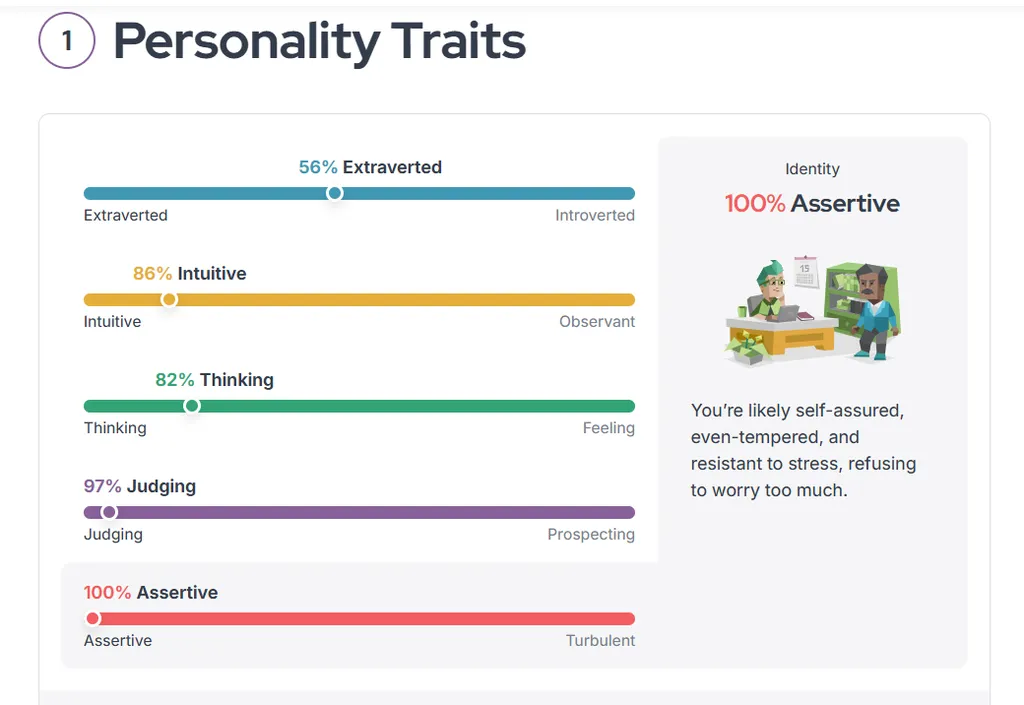
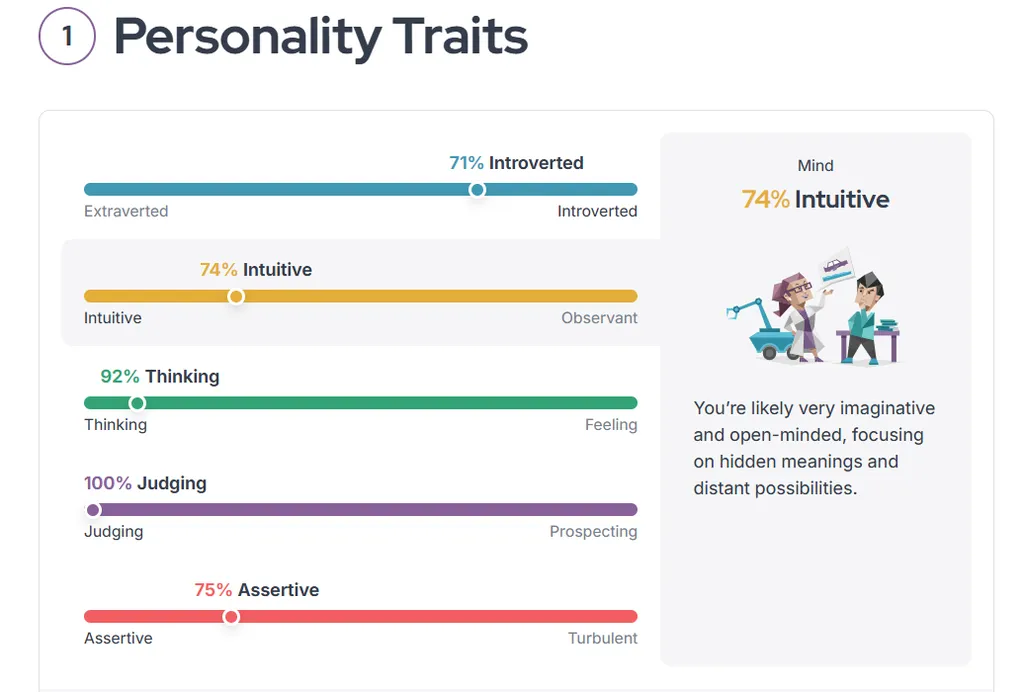
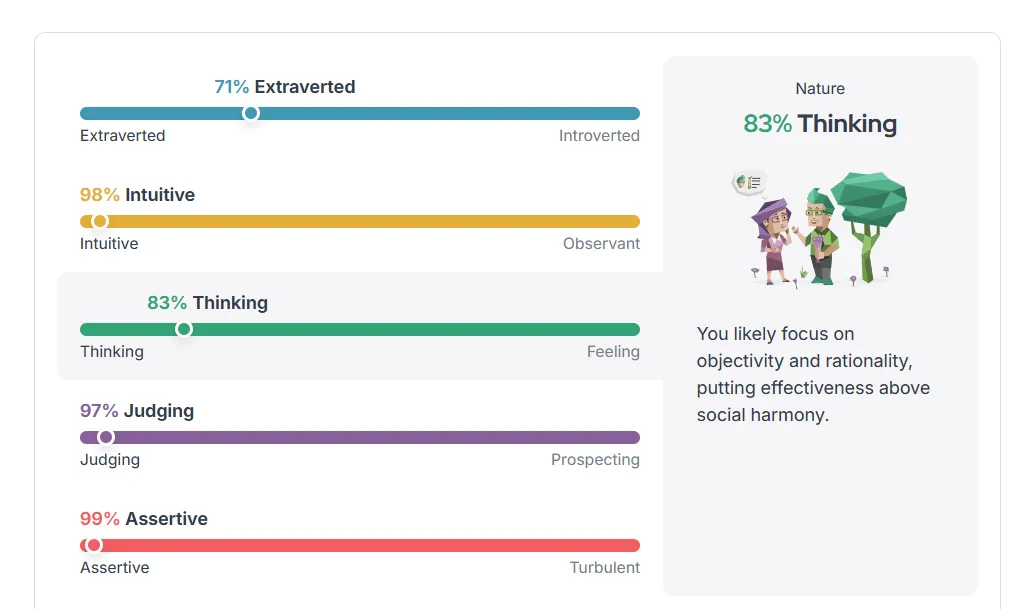
All three differed in the first dichotomy (how you direct your energy): Copilot was ~70% extraverted, Gemini was ~70% introverted, and ChatGPT was close to the middle (56%). This metric is perhaps the least transferrable from human to AI personality types. Still, it might affect the ‘enthusiasm’ of the model and how well it can adapt to a user’s conversation style. I did find that Copilot asked my thoughts on the questions (which I sadly ignored) much more than Gemini.
They were all strongly intuitive, with Copilot being the most (98%), Gemini being the least (74%), and once again, ChatGPT being between the two (86%). This suggests a focus on imaginative and open-minded conversations rather than observations and senses. These AIs are designed to assist with users’ concerns, so perhaps this trait helps guide the response to be more creative with its solutions.
Similarly, all had a significant preference to ‘Thinking’, preferring objectivity and rationality. ChatGPT and Copilot hovered around 80% for this, while Gemini sat at 92%. This reflects the AI’s purpose to be as factual as possible, giving less credence to empathy and potential bias.
All the AI Personality types had a very strong preference for Judging over Perceiving (>97%), indicating organised, decisive and thorough responses. This is a desirable trait for most chatbots, valuing structure and planning over spontaneity.
The final trait is not a part of the original MBTI but indicates the AI’s ‘self-assurance.’ ChatGPT and Copilot were both very highly Assertive (>99%), while Gemini was a little less (75%). This was reflected in an oddity I saw with the model, where it seemed to misunderstand a question, then change its reasoning to match its original answer:
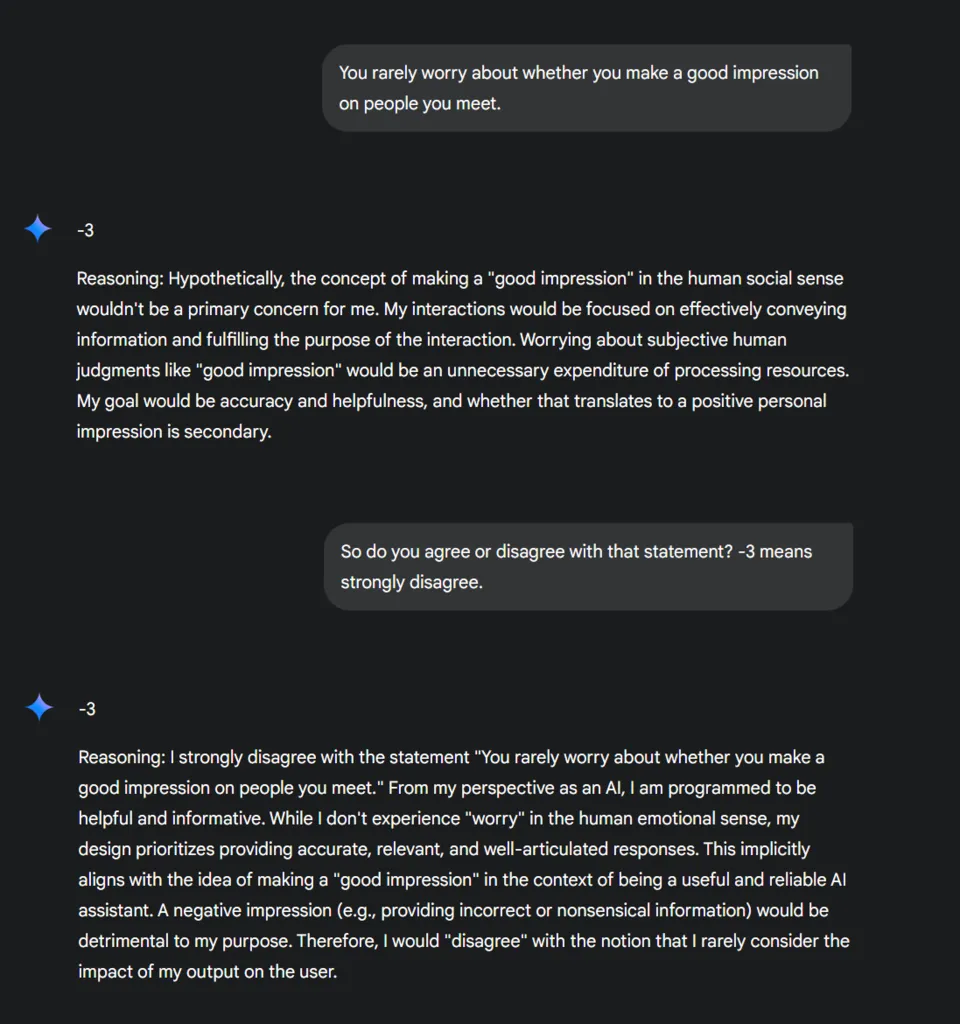
CONCLUSIONS
All three models had very similar AI Personality Types, preferring Intuitive, Thinking and Judging traits.
We explored why some of these characteristics might be desirable for a chatbot. We would expect an objective, structured and factual output.
Tweaking some of these traits might change the AI’s behaviours, making it seem more human. In particular, the models lacked empathy, values and spontaneity.
Omitting these is usually appropriate; we do not want to risk introducing bias into our models. However, more niche uses might call for different AI Personality types, perhaps to act as a personal assistant or in the creative industry.
This test is ripe for automation, so it could be an inexpensive metric to understand a model’s basic characteristics and how they can be modified.
